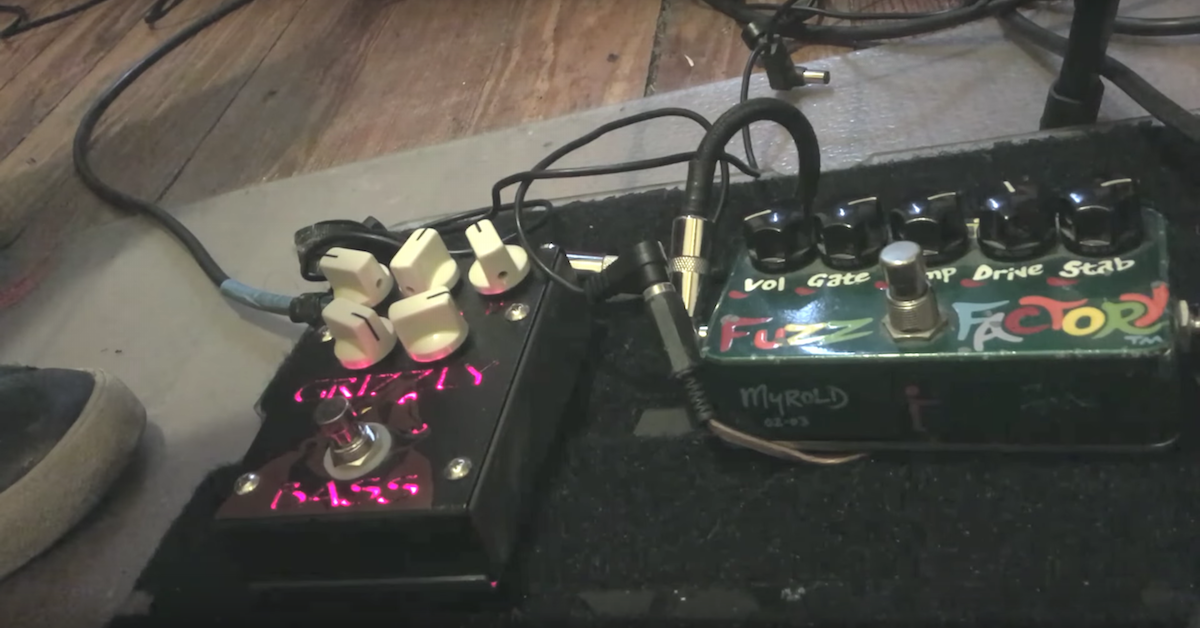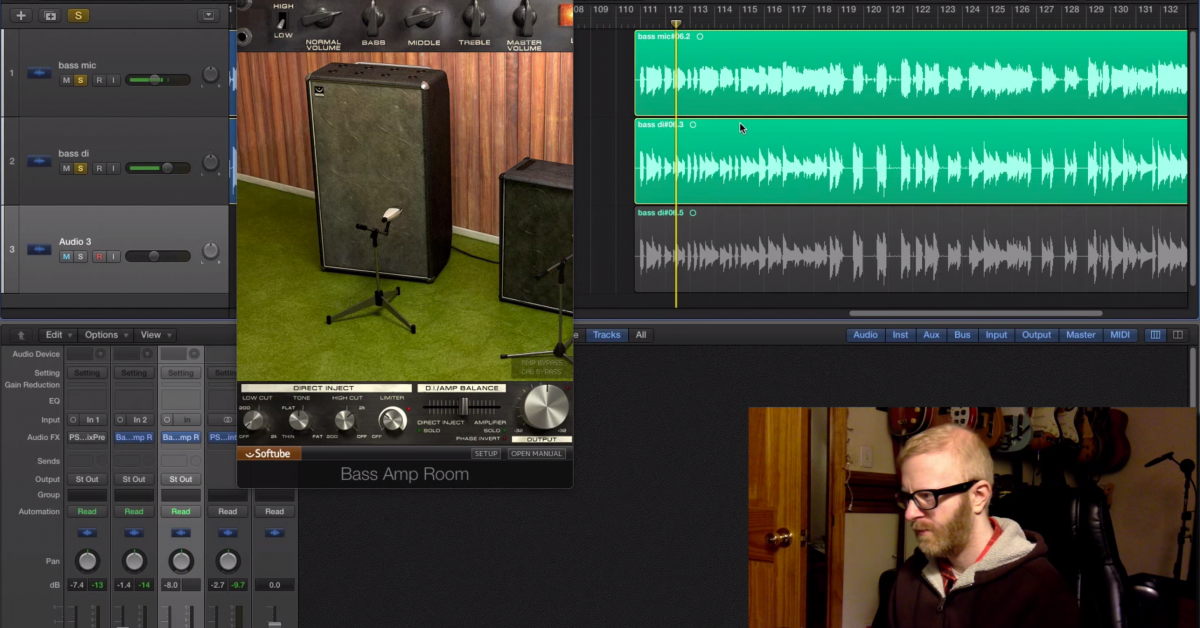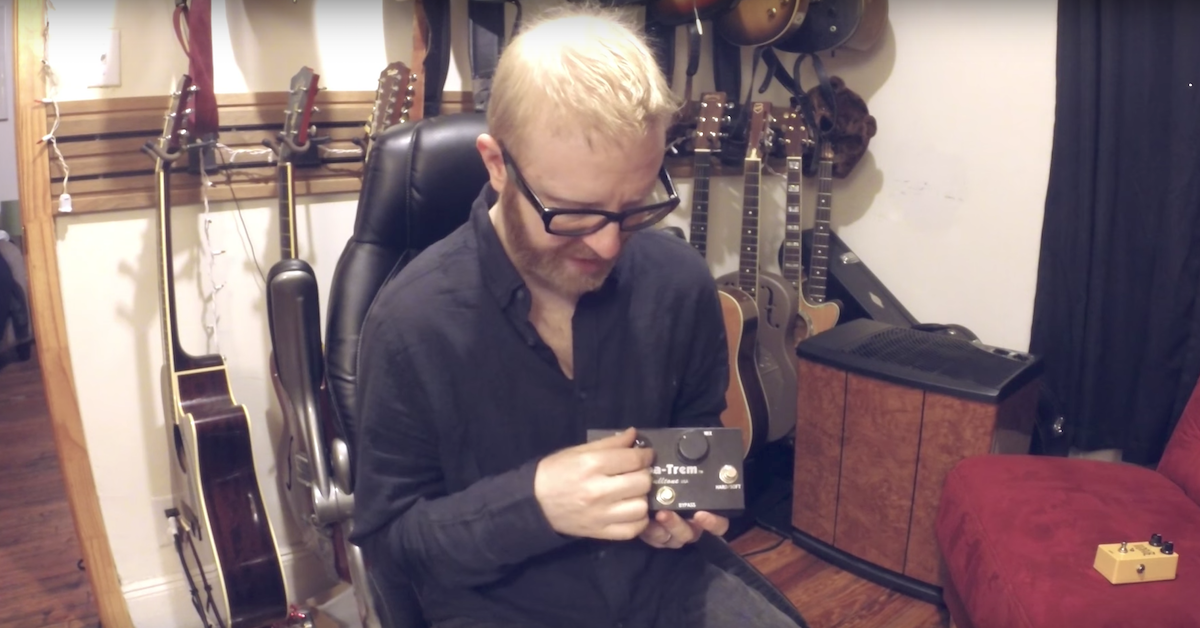To Buffer or Not to Buffer, That Is the Loaded Question
Article Content
Buffers are widely misunderstood. Unlike an overdrive or delay pedal, it’s a little harder to understand its use or even contemplate its effectiveness.
Imagine the difference between walking around NYC with a small bag containing a single a magazine versus ten large shopping bags from Macy’s.
Sure, you can still walk across town with 10 bags, but it’s a lot more work and struggle.
Each time you add a pedal, you’re loading your signal more (each pedal is like adding another shopping bag). Each patch cable, each contact equals more signal loss.
Blah, Blah, Blah
There is a long technical explanation for how buffers work. I’m going to avoid all the techie jabber about impedance and capacitance in this article. There are plenty of articles that discuss that in-depth. I feel a simple and practical explanation without heady verbiage is lacking.
The Weight
It’s often considered that a loaded signal is a bad thing. Just remember, there really is no good or bad in the quest for tone. Some prefer the sound of a loaded signal. Warren Haynes (Allman Brothers/Gov’t Mule) runs a 50ft cable to his amp to mellow the tone.
Buffy the Vampire Slayer
Some pedals have buffers in them. These days, guitarists are trying to avoid them. This is the reason true bypass pedals have boomed in recent years.
There has been a movement to essentially abolish buffers. Buffers have gotten a bad rap though, partly due to the fact many consumer grade pedals use cheap buffers.
Example: Personally, I’ve never been a fan of the buffers in Boss pedals. I don’t have an issue with the effect sounds of Boss products. They’re fine. The issue is more when they’re off and the buffer is left active.
It should be noted that some people like the buffers in Boss, MXR and other popular pedals. As with everything, you have to come to your own conclusion. I encourage you to experiment.
Buffer of Choice
Not all buffers sound the same. This goes for dedicated buffers and buffers built into pedals. Sometimes, the variations may be subtle, but they’re there.
Chain of Fools
Where is the best place for a buffer? That depends on your use and preference. For my taste, I place the buffer after my fuzz and wah.
Each position you place the buffer will change the sound.
The Fuzz Incident
I like to think of a buffer as another element of tone shaping.
For instance: Placing a buffer before a fuzz pedal will change the high-frequency response of the fuzz. The fuzz will be brighter and less mushy.
However, if you like to play with your volume knob, the dynamic relationship between your guitar and fuzz will change (in a less than flattering way for most guitarists). Obviously, this won’t be an issue if you like to play your fuzz full out all the time.
This is one way to manipulate pedals you already own. With a buffer, you can add a slightly different character to your fuzz or wah.
Reality Bites
A buffer doesn’t exactly repair your signal to the same sound as plugging straight into an amp. It preserves the signal to its state right before the buffer.
That is a subtle distinction. A buffer doesn’t work backward. Just forwards.
Meaning if you have a 15-foot cable running into a fuzz, then into a buffer, it will preserve the signal after the fuzz.
To get closest to a “straight into the amp” tone you would have to use a short cable from your guitar into a buffer first.
Placing the buffer last in the chain will maintain the sound of your signal post-pedals.
Some people like this placement as they don’t mind the sound of the pedals loading their signal. But, they dislike the sound of the long cable leaving their pedalboard to their amp.
Cabling
This brings up the topic of cables. In short, the longer the cable, the more high-end loss occurs.
If you think about it, you most likely run about 25 to 30 foot of cable. A cable from your guitar to the first pedal. Plus, a cable from your guitar to the amp. Don’t forget to add in the length of all of those patch cables between pedals.
Cables are the biggest culprit of tone loss. Not all cables are created equal either. I’m one of the believers that think different cables sound different.
Build Me up Buttercup
So buffers are back in style? Should I buy all buffered pedals?
Hold on! Just like most things that are good, they’re best in moderation. Remember that night you had that last “nightcap” shot of tequila and ate two slices of greasy pepperoni pizza at 2:45 am? Seemed like a good idea at the time, right? #hindsight
Too many buffers in your signal can add noise. They act like a preamplifier. I usually only use one. But, some like to place a buffer at the beginning and end of their chain. That’s two max. Let’s not get crazy.
Leap Frog
There is the chance that a buffer before some pedals may make them too bright or add noise. You should spend some time experimenting with placement.
Take an afternoon off. Put on your smoking jacket and set up shop in your library for a fascinating afternoon of pedal placement.
My Thoughts
Your ears can fool you. For the longest time, I didn’t like buffers. Even though they restored some high-end back into the signal, it didn’t sound natural to my ears.
I liked the the tone of my pedals running through a Loopmaster true bypass switcher.
I decided to do an audio test to explore whether my room experience was in line with the recorded tone.
What I discovered really surprised me. I ended up preferring the tone of a buffer. The buffer sounded much closer to the guitar plugged straight into the amp.
When playing in the room with the amp, I swore this was not the case. I swore the buffer added more highs and thinned out the signal. My mind was playing tricks on me.
Another experiment was playing a recording of buffered and non-buffered signals to people and asking their favorite. Everyone preferred the buffer sound.
I recorded the experiment. Check out the video below. See what you prefer. There is no right or wrong. Think of it as gaining the knowledge of how every element changes the tone.
Also, resist the urge to think that high-end loss is bad. You may find yourself on a session where a reduction in brightness is desirable.
Your homework is to collect some specimens of buffers, place them in their natural environment. Observe how they interact.
Take notes of your results. I would be curious to know your thoughts. Please though, make sure to adopt a National Geographic commentary voice for this experiment.







